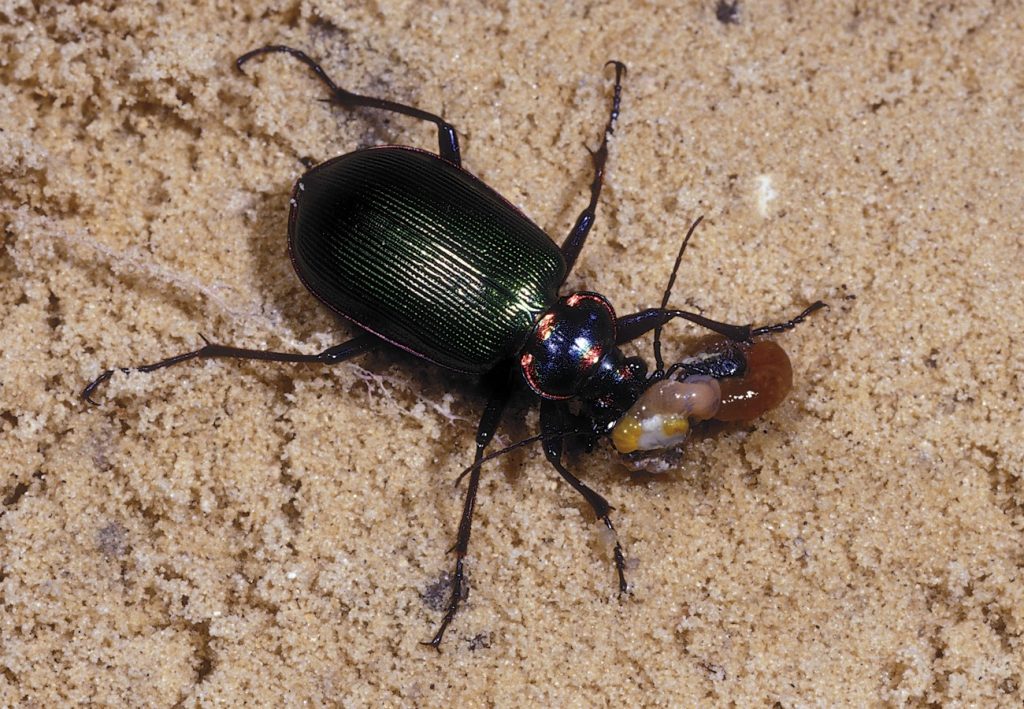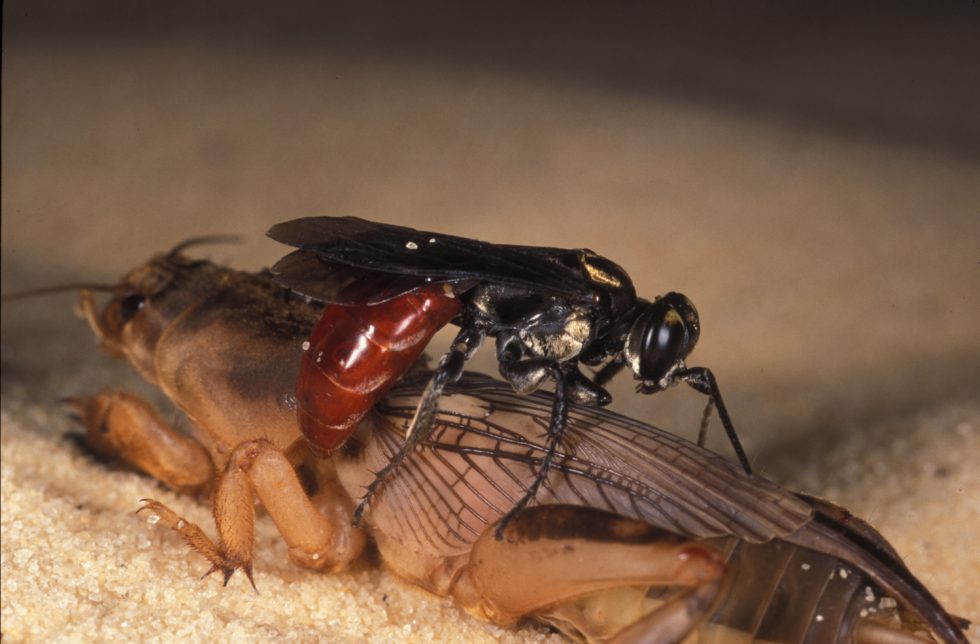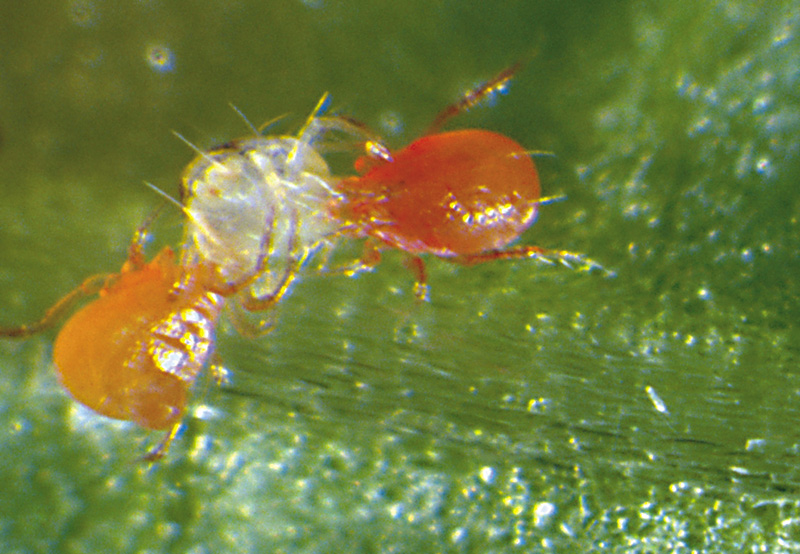‘Tis the season of love, and amidst the heart hoopla, I am spreading my enduring affection for one of my favorite group of organisms: Bugs! But, before you cringe at the thought of all bugs as being pests, ravaging your roses or zesting your Zoysiagrass, allow me to let you in on a little, lesser known fact. Approximately only about 1% of all bugs fall into the pest category, leaving most as unsung heroes in your landscape. Sure, it’s understood that the word “bug” might evoke images of troublemakers. Still, the truth is that these small creatures play a crucial role in maintaining the balance of our ecosystems. They offer services that can enhance your landscape maintenance efforts.
There are a diversity of bugs, more specifically insects and arachnids, that inhabit our turfgrass and ornamental plants– and that is a good thing! While some may indeed be pests, most benefit a thriving ecosystem. Pollinators, decomposers, and natural enemies of pests are among these helpful bugs – the unsung champions of Integrated Pest Management (IPM) programs.
However, it’s the natural enemies that are the real MVPs, providing biological control that keeps pest populations in check and curtails their reproductive potential. Picture them as the guardians of your landscape, suppressing threats and ensuring a harmonious coexistence. Within the bug brigade, there are predators, parasitoids, and even unconventional heroes like pathogens, nematodes, and the occasional avian or mammalian ally. Together, they form a league of defenders ready to champion the cause of landscape maintenance.
So, as we celebrate this season of love, let us shout out to our six and eight-legged friends – the beneficial bugs that quietly and diligently work behind the scenes to keep our landscapes thriving.
“Hi-Fives” all around for these 5 featured natural enemies of turfgrass and ornamental plant pests!
1. Ground Beetles (Coleoptera: Carabidae)
Ground beetles are a large, diverse family of beetles with more than 2,000 species occurring in North America. They are predators of many landscape pests and feed on important turfgrass pests such as mole crickets and caterpillars. They typically hide during the day, and hunt during the night. They live under stones, logs, leaves, bark, and other debris in a variety of habitats. They are reclusive during the daytime but may be seen running quickly along the top of the grass or hiding in leaf litter. Adults range from black to bright metallic with egg-shaped abdomens. Ground beetles have long, strong legs, and large eyes. Larvae are also predaceous with powerful jaws and tough armor-like exoskeleton.

2. Big-Eyed Bugs (Hemiptera: Geocoridae)
There are many different species of big-eyed bugs in the family Geocoridae. Big-eyed bugs feed on insect and pest mites of turfgrasses and ornamental plants. They are notorious for being natural enemies of chinch bugs, Florida’s worst turfgrass pest. They also like to eat soft-bodied insects such as armyworms and other caterpillar pests. Big-eyed bugs are small, about 0.4 cm long, with oblong-oval bodies and a triangular head that is broader than long. Their prominent eyes curve backward and overlap the front of the thorax. Males and females look similar and the juvenile, nymphs, are wingless.

3. Larra Wasps (Hymenoptera: Crabronidae)
Larra wasps are parasitoids that specifically attack mole crickets. They are non-aggressive, non- communal, solitary wasps that live in close association with their hosts. Two species of Larra wasps occur in Florida, Larra analis Fabricus is a native species that is occurs in the eastern US, north to Pennsylvania and west to Kansas in places where its host, the native mole cricket Neocurtilla hexadactyla (Perty), is distributed. Larra bicolor is native to South America, where it was imported and released in the 1980s for biological control of Florida’s invasive mole cricket species (Neoscapteriscus spp.). It has now successfully established in Florida.
Larra wasps are black with their abdomen partially (Larra analis) or totally (Larra bicolor) red, with silvery white markings on the head. They are first observed in May until December and are most abundant in Autumn from September to November. Adults, mostly males, feed on nectar from a diversity of wildflowers including shrubby false buttonwood, partridge pea, cowpea, goldenrod, anise and boneset. Adult females spend most of their time hunting mole crickets.

4. Tachinid Flies (Diptera: Tachinidae)
There are more than 1300 species of Tachinid flies in North America, however they are most widely distributed in South America. All tachinid flies are parasitoids of some insects. They are robust in size and vary in color from drab brown or yellow to flashy iridescent blue. Some species have bristly hairs and spiny bodies. Adults forage for nectar among wildflowers, especially ones in the daisy family (Asteraceae). The Brazilian red-eyed fly, Ormia depleta , is a specialist parasitoid of mole crickets in the genus Neoscapteriscus. This important tachinid fly was introduced into the Florida in the 1980s as a biological control to reduce population of pest mole crickets. It is now established in the state.

5. Predatory Mites (Acari: Phytoseiidae)
There are many distinct species of predatory mites that occur throughout the United States in various habitats on the leaves and stems of plants, trees, shrubs, and grasses. Predatory mites feed on spider mites, other pest mites and their eggs, and thrips. Predatory mites vary in color from white, tan, red to brown, with the lighter colored one taking on the color of their prey. Predatory mites move very fast while ambushing pests, and this hurriedness is one way to distinguish predatory mites from pest ones.

For additional information on natural enemies and biological control, see: https://edis.ifas.ufl.edu/publication/in120.
 5
5
